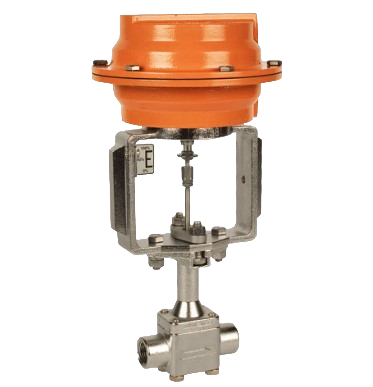Design and Application of Low-Flow Control Valves
On this page
Low-flow control valves refer to control valves with a flow coefficient (Cv value) of 0.05 or less. These valves are extensively used in industrial systems for the precise control of the flow of small amounts of materials, especially for the flow of trace materials under low pressure differentials or the fine adjustment of flow under high pressure differentials. Due to their unique application scenarios and requirements, the design and selection principles of low-flow control valves differ significantly from those of traditional control valves.
The primary application scenarios for low-flow control valves include industrial and laboratory environments that require high-precision flow control. For instance, in the pharmaceutical, chemical, and food processing industries, these valves are used in pilot plants or laboratory equipment where an extremely small amount of material flow is needed for experimental research. Additionally, in certain industrial process flows, a precise addition of a small amount of reagent or catalyst is required to be mixed into large-scale process fluids to ensure the accuracy of the reaction and the quality of the product. In these cases, low-flow control valves can provide accurate flow control, helping to achieve optimization and control of the process.
When designing low-flow control valves, different design principles must be considered compared to conventional control valves. Here are several key factors in the design of low-flow control valves.
Low-flow control valves are typically used for very fine adjustments of flow, so the design must ensure that the valve can provide extremely high control accuracy. This requires the valve's structure and materials to effectively cope with fluid characteristics, especially when the fluid flow state may change from laminar to turbulent.
Under low-flow conditions, the flow characteristics of the fluid passing through the valve can be very complex. Typically, the fluid can exhibit laminar, turbulent, or a mixture of both flow states, and this flow characteristic may change with the valve opening. Therefore, the design must fully consider the dynamic characteristics of the fluid to ensure that the valve maintains good control capabilities throughout the entire operating range.
Although the Cv value is an important indicator of the valve's flow capacity, its actual significance may be limited in low-flow control valves. Due to the reduction in valve size and the complexity of flow characteristics, there may be a deviation between the theoretical value of the Cv and the actual control accuracy in practical applications. Therefore, when designing and selecting low-flow control valves, one cannot solely rely on the Cv value; other factors such as the properties of the fluid, pressure loss, and the overall control requirements of the system must also be considered.
The design and manufacturing of low-flow control valves face a series of challenges, requiring optimization in multiple aspects to ensure their reliability and stability in high-precision applications.
The throttling elements in low-flow control valves are extremely small, making the fluid's flow characteristics through the valve especially critical. Under high differential pressures, the wear on valve components due to fluid flow can increase significantly, posing higher demands on material selection and design. Materials must exhibit excellent wear resistance and corrosion resistance to ensure the valve's long life and high performance.
In standard valve design, the flow capacity is mainly determined by the diameter of the valve seat hole. To achieve finer flow control, the diameter of the valve seat hole may be reduced to 1/16 inches, with a theoretical Cv value close to 0.06, which is the upper limit of the low-flow range. By reducing the stem travel or limiting the opening of the channel mouth, the flow can be further reduced. In some cases, conical needles or plugs with milled slots can be used to achieve finer flow adjustment; these designs can be installed in the body of a standard straight-through valve, effectively reducing the size of the valve body and actuator, suitable for experimental devices and other precise control applications.
Low-flow control valves are often used in situations that require high-frequency operation or precise adjustment, where the reliability and maintainability of the valve are highly demanded. Due to the small size of these valves, the design usually considers the interchangeability of the valve internals, which simplifies the maintenance process and reduces maintenance costs in practical applications. In addition, the ease of replacing internals also helps to extend the service life of the valve, reduce downtime, and improve the efficiency of the system.
Low-flow control valves are essential in industrial applications requiring precise flow control. They offer high-precision adjustments, making them suitable for diverse settings, from laboratories to large-scale production. Despite challenges like complex flow characteristics, wear, and limited flow capacity, careful design and material selection can ensure their stable and efficient operation. In summary, low-flow control valves are crucial for achieving precise control and optimizing industrial processes, ensuring reliable performance and efficient production across various applications.

